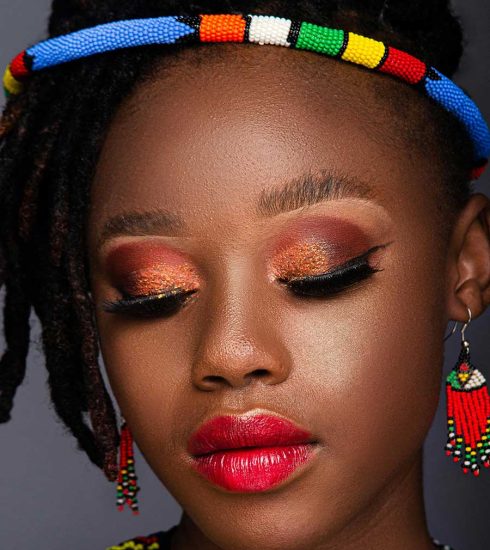How African Cultures are Redefining Couture and the Blend to Retail Fashion
- Fesheni Africa
- August 1, 2025
African fashion is having a moment—no, scratch that—it’s having a movement. Bold prints, intricate beadwork, and handwoven textiles have left the continent and are now strutting down runways, gracing red carpets, and filling closets worldwide.
What’s more fascinating is how African cultures are redefining couture and cleverly blending it into retail fashion. The results? A celebration of heritage that feels modern, chic, and refreshingly inclusive.
The Soul of African Couture
Couture, at its essence, is about craftsmanship, storytelling, and exclusivity—all of which are embedded in African fashion traditions. Take the intricate Aso Oke from Nigeria, for example. This handwoven fabric, worn by the Yoruba people, was once reserved for royal and ceremonial events. Today, designers like Deola Sagoe have elevated Aso Oke into couture-worthy creations that could easily rival Parisian haute couture. Her designs feature a mix of traditional patterns and contemporary cuts that marry heritage with high fashion.
Similarly, South African designer Laduma Ngxokolo of MAXHOSA AFRICA has taken the traditional Xhosa patterns and knitwear to the global stage. His designs, inspired by his cultural rites of passage, are now sought after by celebrities and fashion enthusiasts alike. African couture doesn’t just sit pretty in museums; it walks, swirls, and dances down catwalks, constantly evolving while staying true to its roots.
From Custom to Ready-to-Wear
But couture isn’t where the story ends—it’s only the beginning. African fashion is increasingly finding a home in retail, where it can reach more people and spread its influence further. Brands like Christie Brown from Ghana are a testament to this shift. Founded by Aisha Ayensu, Christie Brown offers contemporary pieces that incorporate bold African prints and fabrics. These are not just wearable—they’re statement pieces.
Similarly, South Africa’s Rich Mnisi blurs the line between couture and ready-to-wear. Known for his avant-garde yet accessible designs, Mnisi’s pieces are stocked by global retailers, making it easy for anyone to incorporate African aesthetics into their everyday wardrobe.
The retail space has also embraced Ankara fabric, a vibrant wax print originally associated with West Africa. Designers are now using Ankara to create everything from streetwear to evening gowns, proving that traditional fabrics can transition seamlessly into everyday fashion. Brands like Grass-Fields have even taken this trend global, offering affordable yet stylish Ankara outfits to customers worldwide.
Cultural Fusion at Its Finest
What’s particularly exciting is how African fashion is merging with other global styles. The result? A beautiful fusion that honors tradition while embracing the modern. Think suits lined with Maasai-inspired prints, sneakers with Kente patterns, or handbags adorned with Yoruba beadwork. This fusion is not about appropriation—it’s about collaboration.
Take Virgil Abloh, the late Ghanaian-American designer and creative director of Louis Vuitton, who brought African design elements into the luxury fashion world. His collections often referenced his roots, blending African influences with high-end aesthetics. Similarly, Nigerian designer Kenneth Ize incorporates traditional Aso Oke into contemporary pieces, often collaborating with European houses to bring a global perspective to his work.
Even Hollywood is taking note. Remember Chadwick Boseman’s jaw-dropping outfits on the Black Panther press tour? Each look celebrated African fashion, blending couture-level craftsmanship with cultural storytelling. The movie itself was a love letter to African aesthetics, with costume designer Ruth E. Carter drawing from numerous African cultures to create Wakanda’s regal yet relatable style.
The Retail Revolution
The accessibility of African fashion in retail isn’t just a trend—it’s a revolution. The rise of e-commerce has allowed brands like KISUA and Tongoro Studio to sell directly to customers across the globe. These platforms not only showcase the richness of African design but also challenge the notion that luxury must come from the West.
Social media is playing its part too. Platforms like Instagram and TikTok have become virtual runways for African fashion, turning local designers into global stars. Hashtags like #AfricanFashion and #WearAfrican encourage people to celebrate the continent’s creativity, creating a sense of community around these designs.
A Future of Endless Possibilities
African cultures are proving that fashion can be both deeply personal and universally appealing. By redefining couture and blending it with retail, designers are making a statement: African fashion is not a niche—it’s a force.
As more designers embrace their heritage while experimenting with modern techniques, the line between tradition and innovation continues to blur. African fashion is no longer confined to the continent; it’s shaping global style, one bold print and handcrafted stitch at a time.
So, the next time you slip on a jacket with Kente trim or carry a bag adorned with Maasai beads, remember—you’re wearing more than fashion. You’re wearing a story, a legacy, and a piece of Africa’s evolving elegance. That’s couture with a soul.




